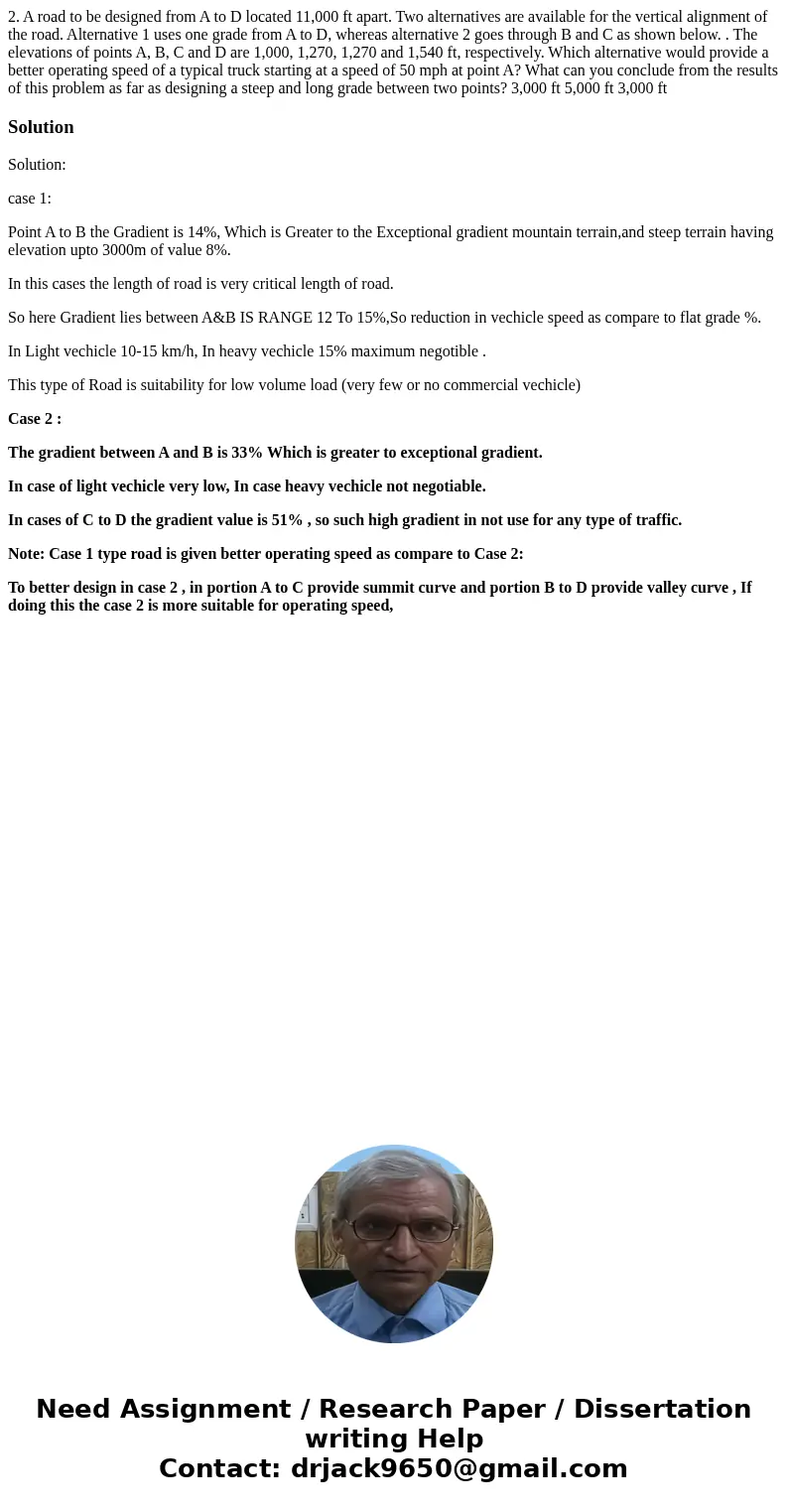2 A road to be designed from A to D located 11000 ft apart T
Solution
Solution:
case 1:
Point A to B the Gradient is 14%, Which is Greater to the Exceptional gradient mountain terrain,and steep terrain having elevation upto 3000m of value 8%.
In this cases the length of road is very critical length of road.
So here Gradient lies between A&B IS RANGE 12 To 15%,So reduction in vechicle speed as compare to flat grade %.
In Light vechicle 10-15 km/h, In heavy vechicle 15% maximum negotible .
This type of Road is suitability for low volume load (very few or no commercial vechicle)
Case 2 :
The gradient between A and B is 33% Which is greater to exceptional gradient.
In case of light vechicle very low, In case heavy vechicle not negotiable.
In cases of C to D the gradient value is 51% , so such high gradient in not use for any type of traffic.
Note: Case 1 type road is given better operating speed as compare to Case 2:
To better design in case 2 , in portion A to C provide summit curve and portion B to D provide valley curve , If doing this the case 2 is more suitable for operating speed,

 Homework Sourse
Homework Sourse